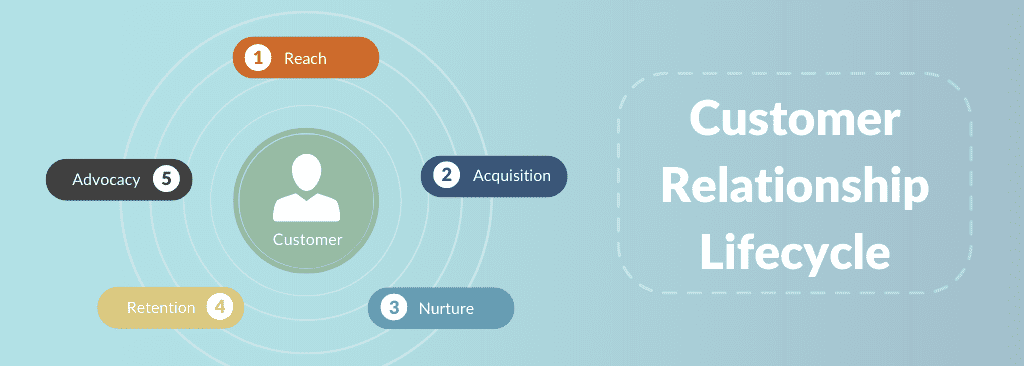What is Your Customer Relationship Lifecycle in CRM?
What is a Customer Relationship Lifecycle?
In a customer relationship management (CRM), customer lifecycle depicts the life of your relationship with your customers.
The goal is to engage and deepen the relationship with your customers. The beauty is that the customer relationship is non-linear – it is circular, with advocacy as the end goal. However, your business needs to constantly offer relevant and timely messaging to existing customers for them to continue being loyal to you.
After all, acquiring a new customer takes 5X more money and time vis-à-vis retaining an existing customer.
The customer relationship lifecycle covers both acquisition and retention.
Let us look at the lifecycle itself.
5 Key Stages of Customer Relationship (CRM) Lifecycle
At each stage, your customers interact with your business through various channels – website, search, chat, content, support, voice, video, and product/service consumption or adoption.
Every channel should be aligned to fulfill your customers’ requirements at different stages of the lifecycle. There are 5 stages of the customer relationship lifecycle they are: reach, acquisition, nurture, retention, and advocacy.
The objective is always to enhance the relationship and take it to the next level, where your business and customers gain from the relationship.
1. Reach
At this stage, the only aim is to ensure that your prospects are aware of your brand. You try to grab their attention to what you offer.
This could be through email campaigns, advertising, word-of-mouth, social media, search engine optimization, referrals, and inside sales.
Once you have the attention of your prospects, you set out to develop a relationship with them.
Now, we move to the next stage of the lifecycle
2. Acquisition
At this stage, your customers open up and speak about their needs, wants, and desires. Here, you will have to engage with them in a way that makes you the best option to provide them with the solution they are looking at.
Here, the service levels are very critical, for they would choose a solution from someone else otherwise.
With the appropriate solution, demonstrations, proof of concepts, and pilots, you would be able to move these interested prospects to become customers.
3. Nurture
This is where you convert your paying customers into more than customers. At this stage, you delight your customers with both stated and unstated needs of theirs. You build customer trust with your product and the associated service offerings, where they feel happy about having engaged with you in the first place.
Once you understand how they use your offering, you can choose to offer the bells and whistles that would allow you to maximize your relationship with your customers.
4. Retention
As we wrote earlier, acquiring a new customer takes 5X more effort than retaining an existing one.
This is where your account managers and customer success managers become important. These are proactive, where you seek their feedback – how they are using your offering, how else they can use it to better their business, what issues and bottlenecks they face, and how you can proactively help them overcome.
Besides, you also let your customers know your product roadmap and how they can run their business better with your offering and its roadmap.
You keep them entirely in the loop on what is happening in their domain and share success stories of how your other customers are using it – this would make it interesting for your customers.
With all this, you would not only end up retaining them, but you would also grow their share of the business.
5. Advocacy
Now that you have made your customers love your offering and the services, what is the next logical step?
They start to recommend your offerings to friends and family. After all, people are likelier to buy from a brand that their friends and colleagues suggest.
Any business that has cracked the code of customer lifecycle management would grow rapidly compared to those that haven’t.
In each stage, you have the opportunity to understand and meet their needs, deepening the relationship along the way.
These stages are largely predictable, from reaching out to your customers to making them advocates or evangelists of your brand. Your brand, marketing, product, and service delivery touchpoints, digital and otherwise, define the overall customer experience.
What is the ultimate goal of this relationship?
Just ask your customers if they would recommend your solution to a friend or colleague. If the answer is in the affirmative, you are doing a great job, and keep at it. Else, you know what to do.
